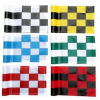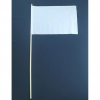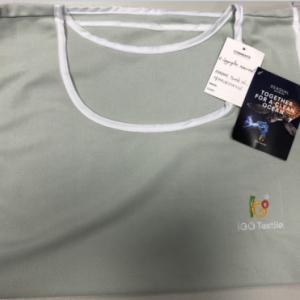Golf flags golf pin flag hole flags wholesaler
We are a golf flags pin flag wholesaler in China. The golf flags are made of SEAQUAL YARN oxford fabric. SEAQUAL fabrics bring to your brand that you are part of a global community helping to clean our ocean.
Delivery: EXW, FOB, CFR, CIF
Minimum order quantity: 2000 yards
Supply Ability: 100,000 yards / Month
Country of Origin: CHINA
Payment term: by T/T 30% as deposit, 70% before shipment
Lead Time: 30 Days
Golf flags golf hole flag wholesaler
The professional golf flags are highly visible markers for the hole on the green, being essential for golfers with course detection and providing clubs a professional look. Designed from 100% recycled polyester material, the vivid flags are sunray resistant which is essential for use in the summer. The golf flags can be used throughout all the golfing season. The golf course pin flags, available in a variety of colours, including white, blue, red, black, light blue, green, and orange, for replacement flags or flags for multiple golfing holes. Designed with a 12in x 12in (30.5cm x 30.5cm) shape the conveniently fit universal 1in (25mm) flag poles. For an easy set-up, simply place the flag over the pole and tie for a tight stable structure.
SEAQUAL Textile Certification No.: SY045WV2100146
Name : golf pin flag made with SEAQUAL YARN, sublimation print pin flag for golf
Model no. : 1122002
Material : polyester 210D fabric
Specifications : 45% SEAQUAL YARN + 55% RPET
Treatments : PU coating one time
Colour : sublimation print or tailor-made dyed, sublimation print
Size : 30x20cm with wooden pole
Sample fee : yes but will be refunded when order
Sample time : within 7-10 days
Service : OEM & ODM
Features : golf pin flag, sublimation print, pin flag for golf
SEAQUAL logo : hang tags available when order
From the historical documents, the earliest record of golf appeared in 1457. Because the soldiers’ fanatical obsession with golf affected their daily training, the then King James II of Scotland asked Parliament to issue a decree to ban golf.
The name of golf is also derived from the Scottish word “Gouf”, which means “hit”. The golf courses built now are also mostly modeled on the unique coastal sandy land in Scotland, which requires not only well-drained, high-quality lawns, but also a certain undulating shape.
Golf has been around for about 300 years as a folk game, and it was finally operated as a sports industry in 1744. On March 7, 1744, “Leith’s Gentlemen’s Golfers Club” (now “Edinburgh Golf Club”), for the members’ competition held on April 2, 1744, specially formulated a competition for members to abide by. There are 13 rules in total. This rule became the earliest written rule in golf history, and was referred to as “Thirteen Rules” by later generations. The rules were published in plain text, and for more than 150 years since then, they have been the basic rules for golf clubs or associations in Europe and the United States to conduct golf competitions.

About 100 years later, in 1860, the world’s first golf tournament, the British Open, was held, pioneering the modern game of golf. As the British colonial rule continued to expand outward, golf also spread from the British Isles to continental Europe, the Americas, to Africa, Oceania and Asia. By the beginning of the 20th century, golf had been developed around the world.
As the number of international events continues to increase, the differences between the Royal and Ancient Golf Club of St Andrews in Scotland and the USGA over rules continue to intensify. It was not until the beginning of the 20th century that the two most influential institutions agreed to adopt the rules of golf competition established by the Royal and Ancient Golf Club of St Andrews in Scotland when international competitions were held in Europe and the United States. Even so, the two institutions still disagree on many technical details of the rules, and each international golf event held in the two places still has to do the work of unifying the rules before the game.
In 1951, the USGA and the Royal and Ancient Golf Club of St. Andrews in Scotland, after careful negotiation, fundamentally resolved the differences in the understanding of the rules. The two sides reached a consensus on the interpretation of the rules, and unanimously decided to hold a joint meeting every four years. Review errors and revise the rules of golf competition. Since then, these two institutions have become the world’s recognized highest authority for the formulation, interpretation and arbitration of golf competition rules.
Golf was listed as a sport in the 1900 and 1904 Olympics, but it is not an official Olympic sport. In the 1900, 1904 and 2016 Olympics golf was an official sport.




















